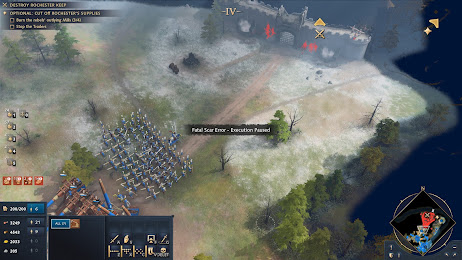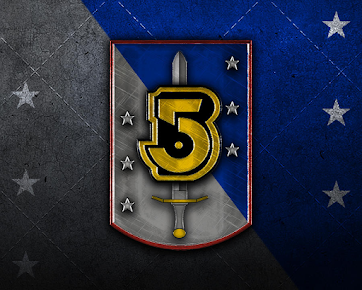Tor Books
have unveiled a new world map for Robert Jordan's
Wheel of Time book. The map appears in
Origins of the Wheel of Time, a new behind-the-scenes book about the series by Michael Livingston, due out in November.
The original world map was published in The World of Robert Jordan's Wheel of Time (published in 1997). The map was created in 1995 by John M. Ford*, between the publication of Lord of Chaos and A Crown of Swords (the sixth and seventh books in the series), based on Robert Jordan's notes and directions. Artist Tom Canty then redrew the map for the final book. After Robert Jordan's passing, those notes were among those made public, and are as follows:
The world of the books is the same size as our world. After all, it’s supposed to be our world, with all the tectonic plates shifted. Some reference points:
- Illian is about 2,500 miles south of Chachin, and 2,700 miles south of the Mountains of Dhoom.
- Falme to the Spine of the World is about 3,300 miles.
- Falme to Seanchan across the Aryth Ocean is about 11,000 miles.
- Seanchan to Shara across the Sea of Omerna is about 3,000 miles.
- The Aiel Waste is about 1,200 miles across, while Shara is about 2,000 miles (W-E) by 5,000 miles (N-S), with the Great Blight extending further south in Shara than in the Borderlands.
- Seanchan is about 16,000 miles from the southern tip to the Mountains of Dhoom (named by Hawkwing’s armies) in the north—yes, the same mountain range that girdles the world on land and under the ocean. The north of Seanchan is about 2,000 miles across at its widest, and there is a span of 6,000 miles at its widest in the south.
- South of the known world is an island continent known only to the Sea Folk, but avoided by them, which they call “the Land of the Madmen.” Its dimensions are about 3,000 miles (W-E) by 2,000 miles (N-S), with its southern coast less than 500 miles from the southern ice cap in places. Some speculate on the resemblance of this continent, in all respects, to current-day Australia, but on this we have no opinion.
- There are both northern and southern ice caps. The southern ice cap completely covers whatever land is beneath it, and is larger than Antarctica. The northern ice cap also stretches somewhat further south than in our world.
- And to cap off this post, we note that some of the early maps were sketched out by Mike Ford, and others drawn by Thomas Canty; but the later maps throughout the series are the work of Ellisa Mitchell, a talented artist whose clarity of vision and attention to detail have been responsible for helping us imagine the major cities that have appeared in the story.
The published world map looks like this:
The world map from The World of Robert Jordan's The Wheel of Time by Teresa Patterson and Robert Jordan, map by Tom Canty, based on an initial sketch by John M. Ford (never published).
Obviously, the visual depiction of the map is at variance with Jordan's instructions. Depending on where you count it, Seanchan is between 3,000 and 5,000 miles wide south of the equator rather than 6,000 miles, and Jordan seems to have spent a fair proportion of the two years between the completion of the map and the publication of the book asking for it to be redone:
“extend Seanchan a little farther south. Make southern portion of Seanchan wider by 75%, all south of equator.”
However, the world book was infamously made on a non-existent art budget (the other art in the book is...debatable in quality) and there seems to have been no money available to have the map redrafted. As a result, the map was published as-is, to Jordan's irritation.
We can also assume that RJ wasn't using a detailed art programme to gauge sizes and was going off the scale squares to gauge Seanchan's size. He might have simply taken the 3,000-4,000 mile size and added 75% on it to make it between 5,250 and 7,000 miles, so was still trying to align with his original, 6,000-mile plan.
Twenty-seven years later, Tor have published a "fixed" world map in Origins of the Wheel of Time, and it looks like this:
The new world map from Origins of the Wheel of Time by Mike Livingston, map by Ellisa Mitchell.
Seanchan has been extended in width to some 9,000 miles across in the southern hemisphere, which is a lot (and also looks like it has a tumour sticking out of the side of it, which is less great) and seems to be a lot more than Jordan originally planned. I think simply stretching the map by 75% would have made more sense, and would have made the continent look a bit more natural:
An adjusted version of the original world map with Seanchan made 75% wider.
That's 5 minutes' work so you'd have to massage it a bit, but you get the idea. In this configuration Seanchan is a bit over 7,000 miles wide, so still wider than RJ's original notes but certainly closer to his original plan.
Michael Livingston gives some interesting reasons for the changes
here, but curiously Robert Jordan's notes for the construction of the map are never mentioned, to the point where I wonder if Livingston was aware of them. Instead, he has simply followed RJ's suggestion that Seanchan be stretched by 75% (possibly more) without consideration of Jordan's earlier clear directions that Seanchan is 6,000 miles wide. Simply stretching Seanchan makes the continent some 9,000 miles wide instead (or a whole United States of America bigger!). Livingstone argues this is desirable for two reasons: to bring Seanchan closer to the Westlands, making the immense voyage of the Seanchan to the Westlands more plausible, and also because it "fits" the continental shapes of the landmasses better.
The second point I would say is not really germane: the world is the shape it is in
The Wheel of Time because of the
Breaking of the World, not natural geological forces. The
WoT world is our world and before the Breaking likely much more closely resembled our current world map, bearing in mind Robert Jordan's original plans for a cataclysm between the First Age - our age - and the Age of Legends was for a nuclear war, which would have devastated civilisation but left the continental landmasses largely unchanged. It's possible Seanchan is a reconfigured North and South America (though much larger), and the Land of the Madmen is certainly a reconfigured Australia. The Westlands and Shara may be a reconfigured Eurasia, but the much greater size of the Westlands versus Europe suggests that a huge chunk of Africa was also smershed up into it as well. Of course, it's also likely that the Breaking was so immense that none of the reconfigured continents could really be 1:1 identified with preexisting ones at all (although Jordan did note that the Breaking was not quite so severe the greater the distance from Shayol Ghul).
Bringing Seanchan closer to the Westlands might also be desirable from a plausibility view, but it's also not really possible: Robert Jordan identifies the distance from Falme to Seanchan as being 11,000 miles, so clearly he envisaged the distance as simply being immense in any case, much more Pacific-sized or larger, than Atlantic-sized. The Seanchan could have simply used the One Power via damane to speed their passage, eliminate the risk of storms and make the crossing vastly more efficient than any mundane passage. We also see that the Seanchan invade the Westlands via Falme and Toman Head, whilst this new configuration of Seanchan would make invading via Tremalking, Tarabon and Altara from the start much more likely.
Livingston also mentions Jordan's wish to rename the southern continent, the Land of the Madmen, but that also creates another issue. It appears that after calling the continent "the Land of the Madmen" in the text of the notes, Jordan changed his mind and he wanted to call it "the Mad Lands" instead. Again, the lack of art budget seems to have made it impossible to change the name of the continent on the map so they also decided not to change it in the text. Interestingly, Robert Jordan then proceeded to call it "the Land of the Madmen" for the rest of his life. It appears in his notes under that name and whenever anyone raised the issue in interviews, Q&As, fan mail etc, he stuck to calling it "the Land of the Madmen." Basically, the published canon overrode his behind-the-scenes preference, and to save confusion he stuck with the original name.
This may also indicate that, however, unhappy he was that Seanchan's configuration could not be changed before publication, once it was published, he accepted it as canon and proceeded accordingly. So changing Seanchan's size at all, whether to the 6,000 miles of his original notes or the 9,000 miles of this new configuration, might have simple been out of keeping with the way he worked.
The first thing I did was simply swapped out the world map version of Seanchan for the larger-scaled map of Seanchan found elsewhere in the same world book:
The map of the Seanchan home continent from The World of Robert Jordan's The Wheel of Time by Teresa Patterson and Robert Jordan, map by Tom Canty, based on an initial sketch by John M. Ford (never published).
The "close-up" map of Seanchan is already different in shape to the world map version. It is significantly wider both to the west and east. Simply substituting this map for the other immediately made Seanchan significantly wider. Indeed, comparing the scale of simply inserting the "other Seanchan" on the map makes it line up almost immediately with being 6,000 miles wide, possibly slightly wider already. This makes me wonder if the world map was made first and the continent map later on, with Robert Jordan's notes already taken into consideration.
My Wheel of Time world map, which replaces the original Seanchan from the world map with the larger continent map from elsewhere in the book.
I also did the same thing with the Westlands and Shara, using the larger-scaled local maps to replace their world map versions, resulting in both greater accuracy and more detail.
So it appears that the well-intentioned attempt to redraw the map for the new book may not have been really necessary in the first place, with a more moderate approach respecting Robert Jordan's intentions being possible.
Still, I'm looking forwards to the book to see if Livingston has unearthed any further interesting material.
* Yes, the author of the World Fantasy Award-winning The Dragon Waiting and other fantastical works (including the fan-favourite Star Trek novel How Much for Just the Planet?). It turns out that Ford was also a massive Wheel of Time fan, a fan of maps and a friend of Robert Jordan's. Sadly, John M. Ford passed away in 2006.


































